This post may contain affiliate links, meaning I can earn a small commission from items you purchase (at no cost to you).
Recently, I stumbled across an article that talked about toothpaste ingredients and the issues they can actually cause rather than prevent— and it startled me. I know there are TONS of natural toothpaste companies out there nowadays… yet they’re a bit pricey. If I can make something simple + effective at home for a fraction of the price, why not? Here’s my very own homemade toothpaste recipe… full of only the good stuff.
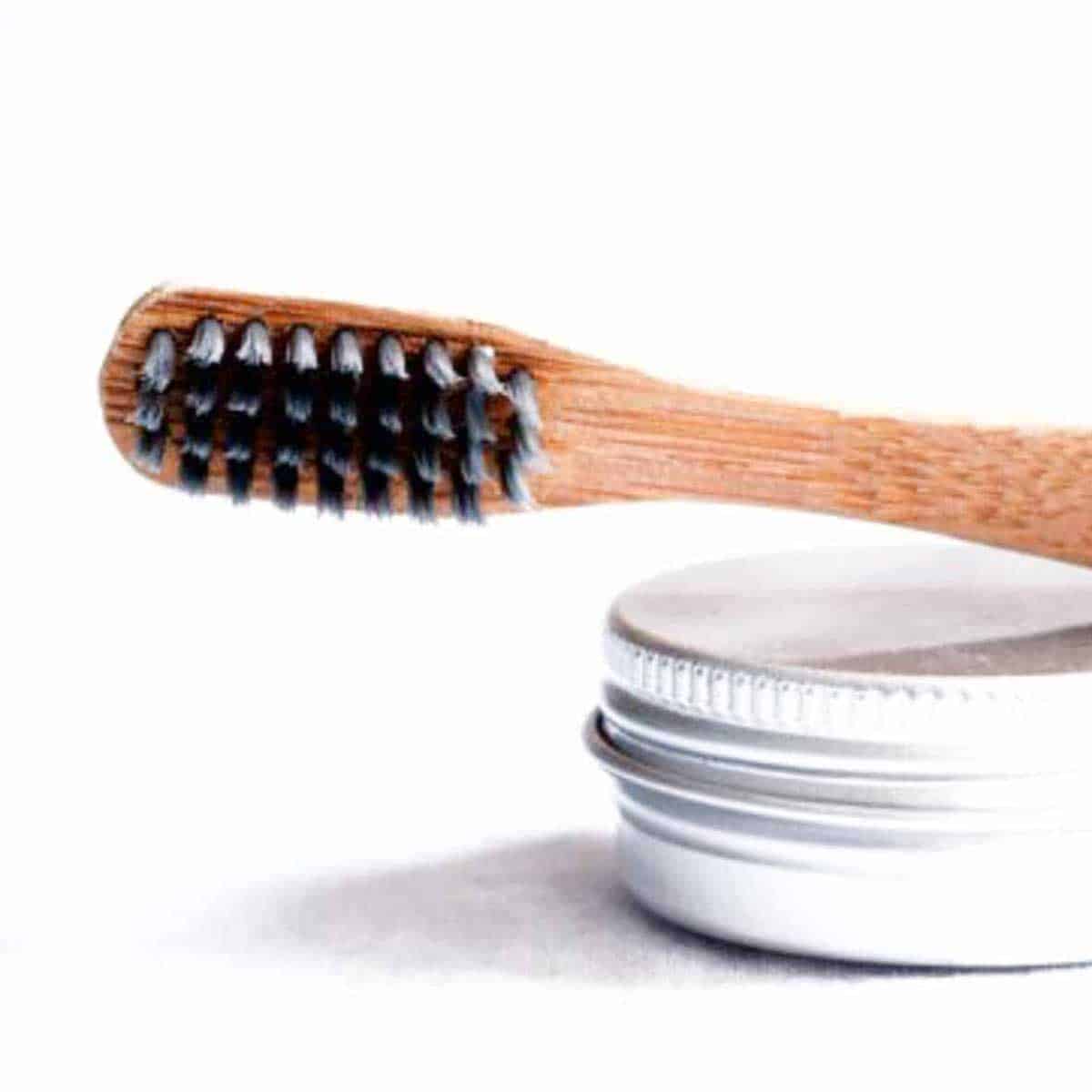
I can honestly say this is the best natural toothpaste I’ve tried, and that’s saying something since I’ve been on the hunt for a great option for a while!
Note: There is no fluoride in this recipe. Depending on your stance with this, feel free to add in a fluoride product or use a fluoride mouthwash afterwards.
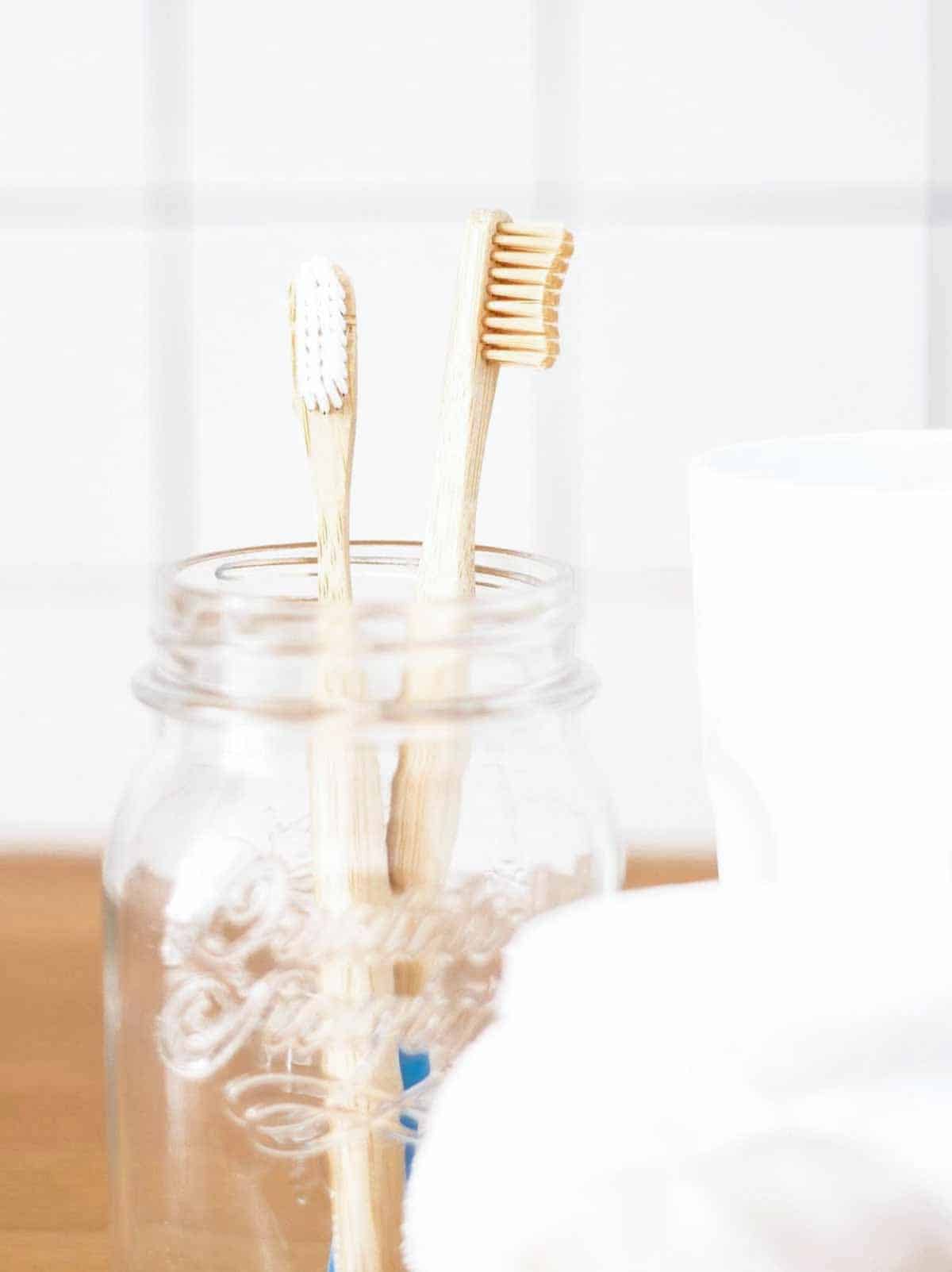
Common toothpaste ingredients
Two ingredients that have a pretty bad wrap are:
1. Glycerin: It gives toothpaste a nice creamy texture and coats the teeth for “protection”, yet at the same time it also stops re-enamalization (so cavities can’t self-heal.)
2. Sodium fluoride: A by-product of aluminum manufacturing that is found in rat poisons and industrial pesticides).
Scary stuff, huh? Well, rather than freak out about it every time I brush my teeth, I decided to make some homemade toothpaste sans weird stuff. And yes— I threw in some wonderful coconut oil that I’m beyond obsessed with and it’s millions of effective uses.
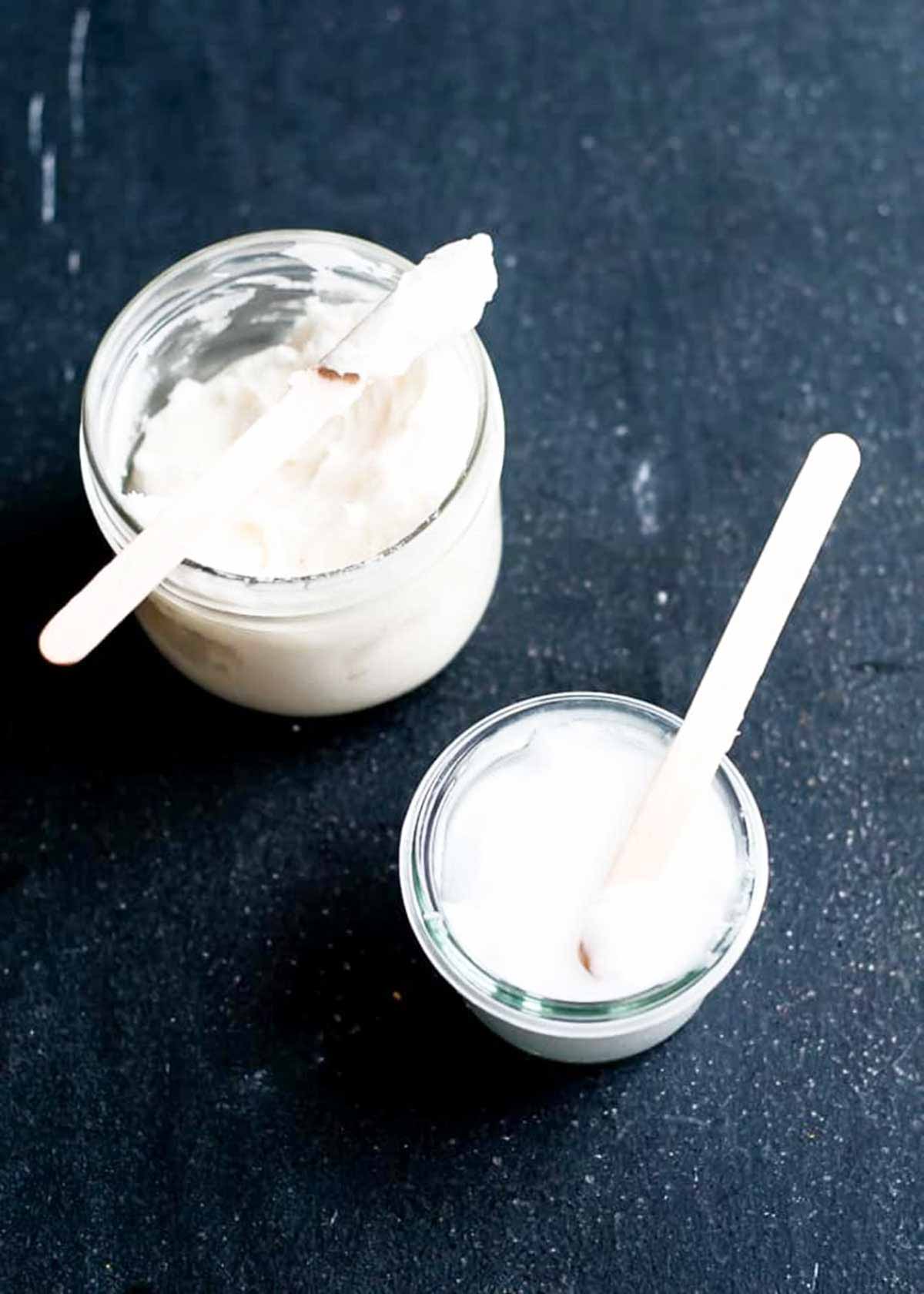
Natural toothpaste recipe
Once I started experimenting with a homemade toothpaste recipe, I was pleasantly surprised to find out how few ingredients I actually needed. My recipe has 4 ingredients, with an optional 5th if you add in activated charcoal. Not only is this recipe simple, it contains only plant based ingredients that are common. No weird chemical compounds or additives here!
When whipping up a batch of this homemade toothpaste, I typically triple the batch. That way each bathroom has its own container, so there’s no family fights over the jar. To keep the ingredients light and airy, I use an immersion blender rather than mixing with a blender or food processor.
Antibacterial essential oils
If you choose the right essential oils, then you can create a strong antibacterial toothpaste. I suggest these essential oils, which I typically purchase from Plant Therapy:
- Grapefruit Oil
- Peppermint Oil
- Tea Tree Oil
- Orange Oil
- Lemongrass Oil
I am thrilled to have found a homemade toothpaste replacement that I actually enjoy using as well as have fun making. I like that I can tweak the recipe depending on my personal preference at the time (sweeter, minty, fruity, etc— it’s all about what essential oils I put in it). This summer I made a batch with grapefruit oil and it has a citrus-tang to it, which was refreshing. Now I am using eucalyptus oil and I love the minty taste.
How to store DIY toothpaste
I like to store homemade toothpaste in a wide-mouth mason jar or leak-proof metal tin. Use a popsicle stick to dip into the toothpaste and and then spread your toothbrush. You can also use a squirt bottle and cut a wide tip on it to help it come out.
Homemade Dog Toothpaste
YES… I made this recipe for me and my family… yet it also works with dogs! Since my sweet dog (Barrett the Huskador), cannot resist licking and swallowing everything in his face, I made this for him too. Since they are completely natural ingredients, there’s no harm if he licks it while I brush.
Other DIY recipes
If this natural recipe has piqued your interest in more natural products you can use in your home, then I’ve got some more great recipes for you. These recipes are plant based versions that seriously work, just like this homemade toothpaste recipe:
- Homemade chest rub
- Fire cider
- Ginger lemon honey tea
- Homemade deodorant
- Elderberry syrup
- Anti-inflammatory smoothie cubes
- Bloat-fighting smoothie
- DIY lip scrub
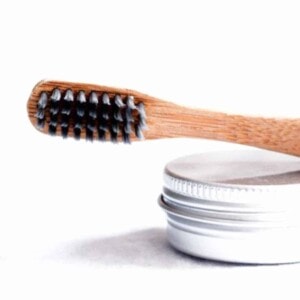
Homemade Toothpaste Recipe
Ingredients
- 6 tablespoon coconut oil, unrefined
- 6 tablespoon baking soda
- 25 drop essential oil eucalyptus, grapefruit, peppermint
- 1 teaspoon stevia or more if you like it sweeter
- activated charcoal optional
Instructions
- Mix all ingredients together in a bowl. I used my to whip it really well and give it a light creamy texture.
- Pour into a mason jar and seal it up until ready to use.
Notes
- Getting it out of the mason jar can be an adjustment. Use a popsicle stick to dip into the toothpaste and spread nicely onto the toothbrush. You can also use a squirt bottle (you will need to cut the pointed tip wider).
- Adding activated charcoal can be a gentle way to whiten your teeth.

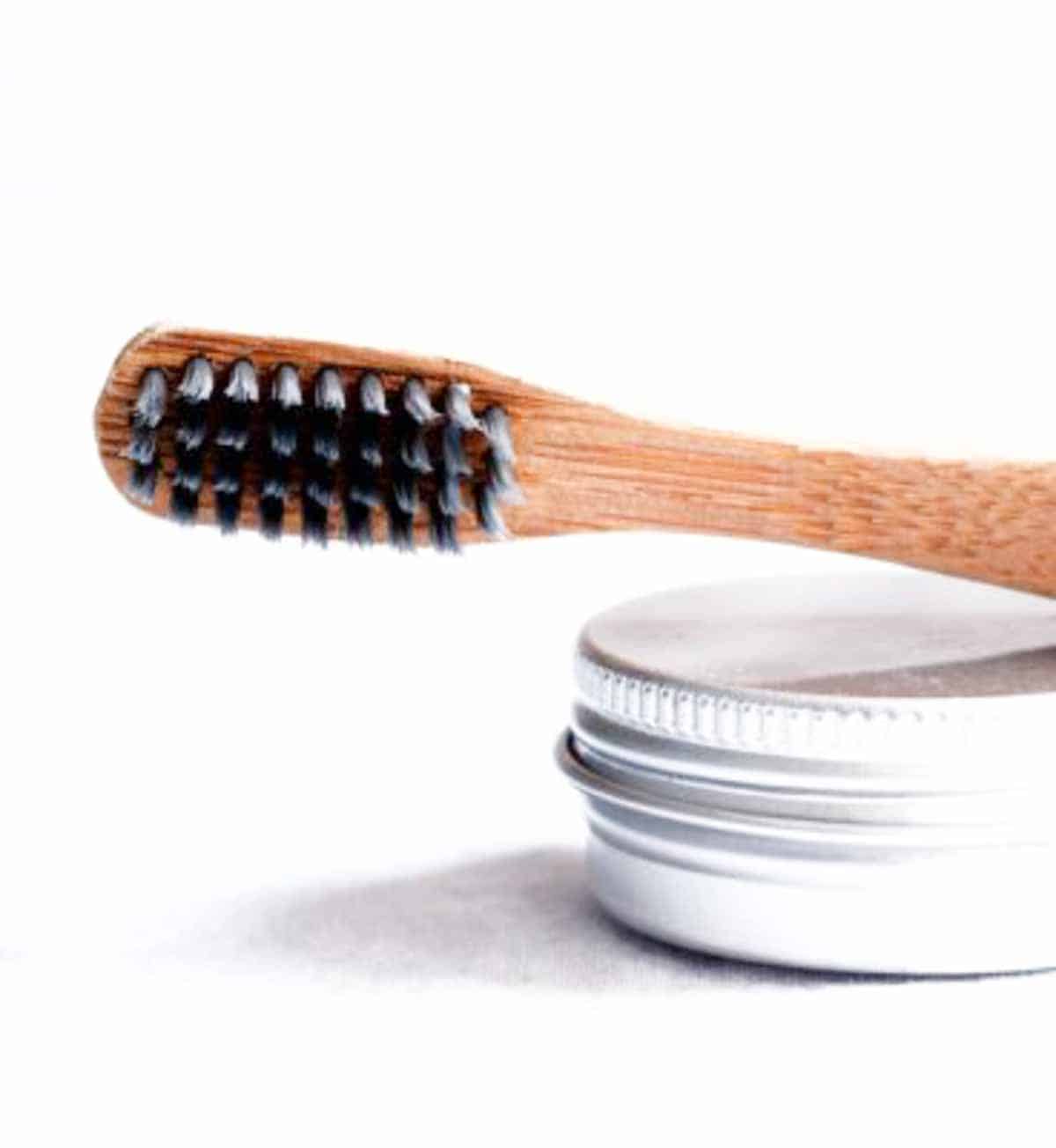
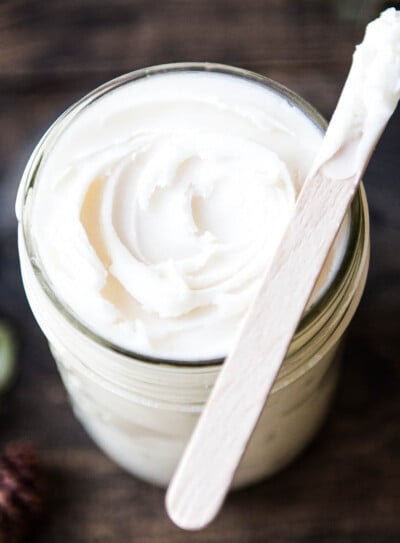
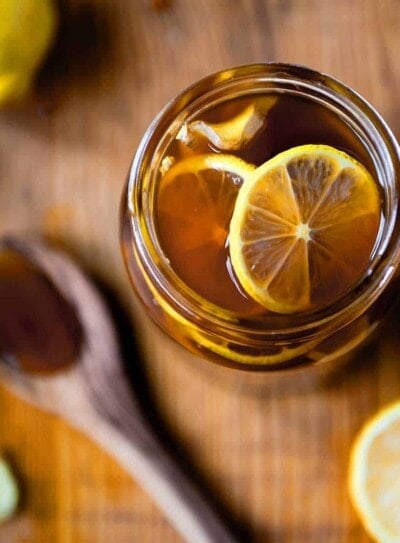
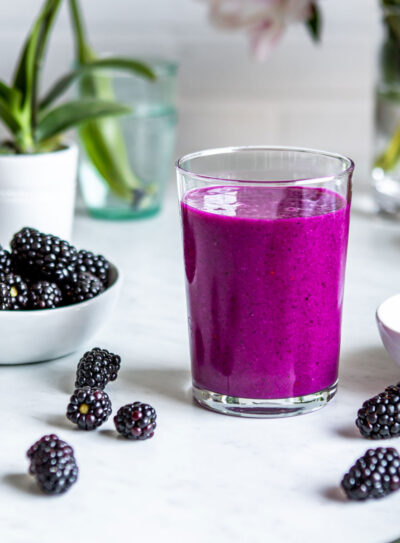
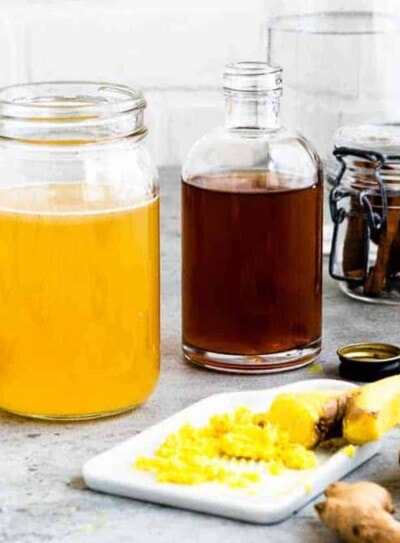










Why not use fennel oil, if you like its Licorice taste and smell as it is safe to swallow in the small amounts used, and it is good for digestive issues.
Hey Nita,
You can def use fennel oil as your essential oil additive in your Homemade Toothepaste! That’s a great idea for licorice lovers!
Want to try the toothpaste bought a toothpaste plant today
Never heard of itay you have some tips.
What about peppermint extract instead of the essential oils
Hi Joyce,
You absolutely can! I would suggest 2-4 tsp, since peppermint extract doesn’t come with a dropper 😉
Def flavor to taste, though. Start with a little then add for a more prominent minty flavor! Now I’m craving mint!
Hi, I really like this article, lots of great information! I already use eco friendly toothoaste tablets but I’ll be trying out this recipe for sure to save some of the cost.
One thing that bugged me about this article is the bit about the sodium flouride in commercial toothpaste. While I’m not disputing that it may well be bad for you, saying that it’s found in rat poison and pesticide isn’t really a good reason – I’m pretty sure water is found in both of those, but I know consuming water isn’t going to rot my teeth!
Do you have a recipe for toothpaste without Baking Soda? I’m wanting to make a natural toothpaste for someone with a corn allergy. Thanks!
Hey Michelle! At this time, our toothpaste formula does contain baking soda. Yet, if you come across a great recipe without, def let us all know! We’d love to try it too!
Baking soda does not contain corn or a corn derivative. I think you’re thinking of baking powder which is a different ingredient.
Never thought about grapefruit oil! This recipe rocks! I have been making a similar recipe for years and I never ever get cavities. So much better than the commercial toothpastes out there with their toxic ingredients! I also use Dentitox ) for my gums and my teeth and its an amazing complement to my DIY toothpaste. This is great! Thanks!
Great recipe although the baking soda has started to make my guns sore, I think it’s very alkaline and powerful! I’m now using 1/2-1 TSP baking soda and 5 tbsp bentonite clay. Excited to try some different oils though !
Grapefruit is a fun and exciting oil to add to toothpaste! I’m curious to know what you’ll try!
Shelf life question: I made a triple batch and put it in 3 toothpaste tubes with 3 extra tiny storage containers for my kids. They are always losing stuff. Anyway, aside from the storage containers, do your refrigerate the extra until needed or leave it out?
You can absolutely leave it at room temp! Or the refrigerator if that’s your preference, but it will be safe and stable in either place! You may just want to give it a good stir before you begin using it if it’s been a little while.
I made the toothpaste and TOTALLY LOVE IT!
I have been putting off getting anymore tooth paste from the store, knowing the ingredients are harmful. I’ve been using straight baking soda and ready for a change. Googled ‘homemade toothpaste’ and saw your recipe. Put it together in seconds and WOW! I was so happy the taste and consistency are perfect! I only made a tablespoon of it to ‘try’ first. Very happy with the result!
It will be easy to change out the flavor each time when I make a new batch.
Thank you,
Sherry D, from Alaska
I just tried making some, but I live in an environment without AC and it’s far above the ambient temperature where coconut oil will remain solid without refrigeration. As such, I needed the ratio of oil to baking soda to be 1:1.75 for it to be pasty. Is this ratio problematic? Shoot I refrigerate the oil before I try mixing a batch?
This was a test run, so I only used one Tbsp of oil to 1 Tbsp and 3 tsps of soda. Not a huge loss if I need to try again. Thanks.
Way to rawk this recipe, Steve! Depending on how your gums and enamel react to the higher baking soda content, you may want to swap some of it out for activated charcoal instead. Refrigerating the coconut oil for a time prior to mixing would help too. However, be sure not to wait until it’s hard as it will be too difficult to mix. Very wise to work in smaller amounts until you find a consistency that works best for you. Keep us posted on what you like best!
3 tsp IS 1 tbsp
I’d love to know how anybody kept it from solidifying. It turned solid overnight, making it unusable.
It was pretty good for the initial use but, short of melting it before EVERY use, it won’t work at all now.
On to a more logical recipe, I suppose. ♀️
Hi Heather – thanks for giving this one a try! Colder weather can really make natural hygiene recipes like these firm up more than we’d like. We recently had a member of our team use a candle warmer in her bathroom to keep natural deodorant ready to use during colder weather. Maybe this would work for you here? Just start it heating while getting dressed, brushing hair, etc. and then it should be ready to go!
Love this recipe! It’s nice to have a natural toothpaste where I can control the ingredients, as there are certain ones found in most toothpastes that I have to avoid. Thanks!
You mention activated charcoal in the ingredients yet don’t explain why to use it— I’m wondering if it’s worth it.
I’m excited to try this one out!
I’ve always used charcoal toothpaste before, I can’t wait to give this recipe a try!
I make a very similar toothpaste, but never thought of mixing in some essential oils … might give that a go, thanks for the idea! Thanks for a great blog!
Essential oils aren’t safe to ingest, how does this work?
Great question Demi! There are diff schools of thought when it comes to ingesting EOs. Many say there are several that are safer to ingest, like lemon, peppermint or tangerine oils. Plus, if using in a toothpaste you aren’t likely to ingest very much at all – unless you’re in the habit of eating your toothpaste! If there’s any concern or doubt at all, you can totally leave the essential oils out altogether for this DIY toothpaste.
Although this whitened my teeth in the beginning, it then proceeded to ruin my enamel. I strongly encourage people to rethink using this daily. I understand everyone is different but enamel cannot be grown back and the risk to your health is not worth it.
We’re super sorry to hear that was your experience, Kat! It might be worth investigating with your dentist which ingredient caused this for you so you can avoid it in other toothpastes. Each ingredient from our recipe can be found in many natural toothpastes, both DIY and store-bought.
Yes, I have heard the baking soda will ruin your teeth enamel if used daily. I think it’s like an abrasive and works away at the enamel. My dentist told me this.
What else could be substituted that isn’t abrasive?
Also, could you use fractionated coconut oil, as it doesn’t harden. Then the ratios would change.p, I guess.
Yes Doreen, some say baking soda is too abrasive for their teeth. I’ve found some recipes that sub in bentonite clay, so that’s an option. However, I’d def recommend talking with your dentist for any alternatives if you have concerns.
As for the coconut oil, if you need it a little thinner you can simply warm it up a bit until it’s the perfect consistency for you.
I cannot stomach stevia. Can you recommend a sweetener other than stevia? Thank you.
We’ve got ya, Frank! Another natural sweetener to try would be monkfruit. Although a little goes a looooooong way, so be sure to start with a super tiny amount.